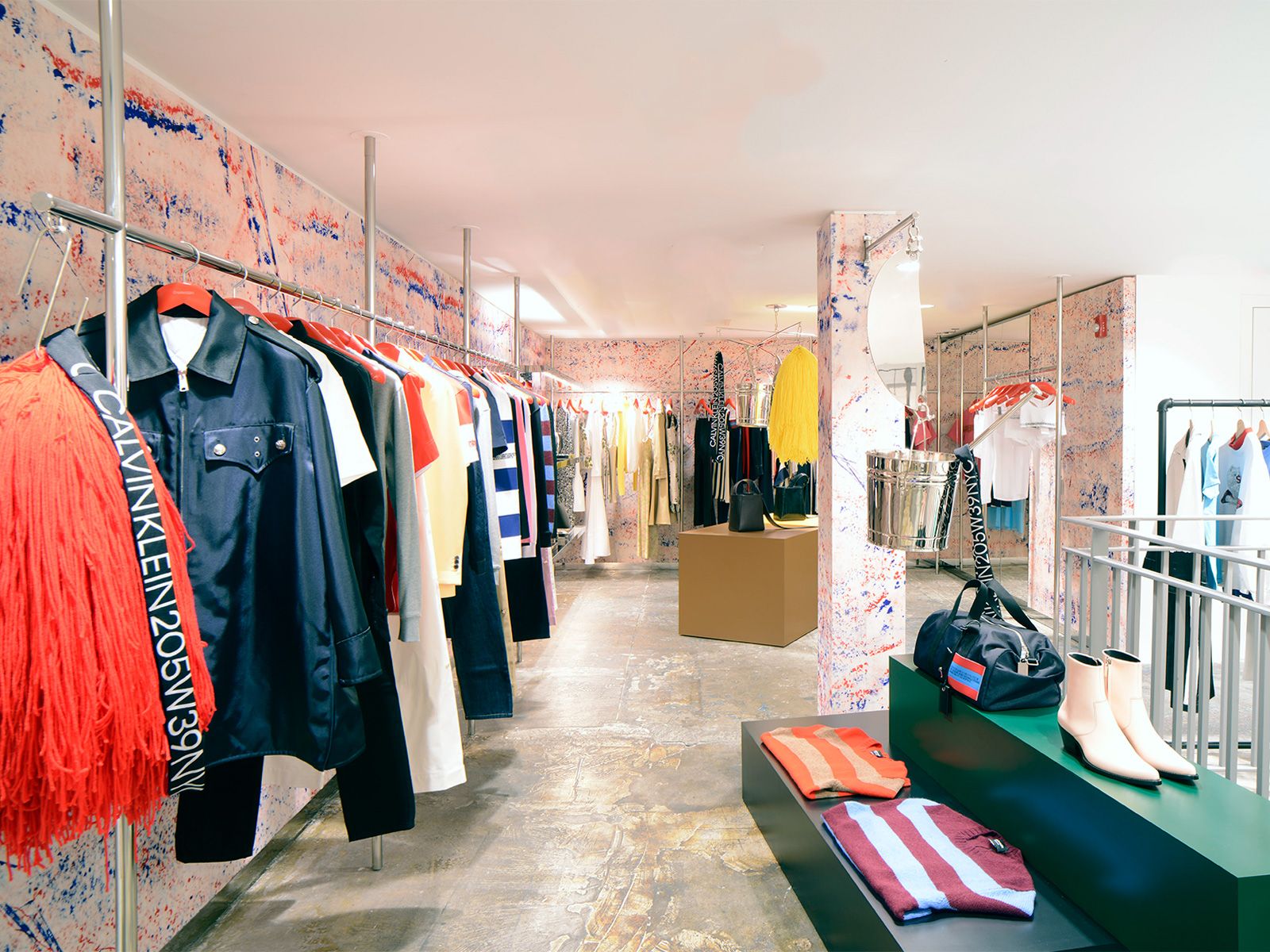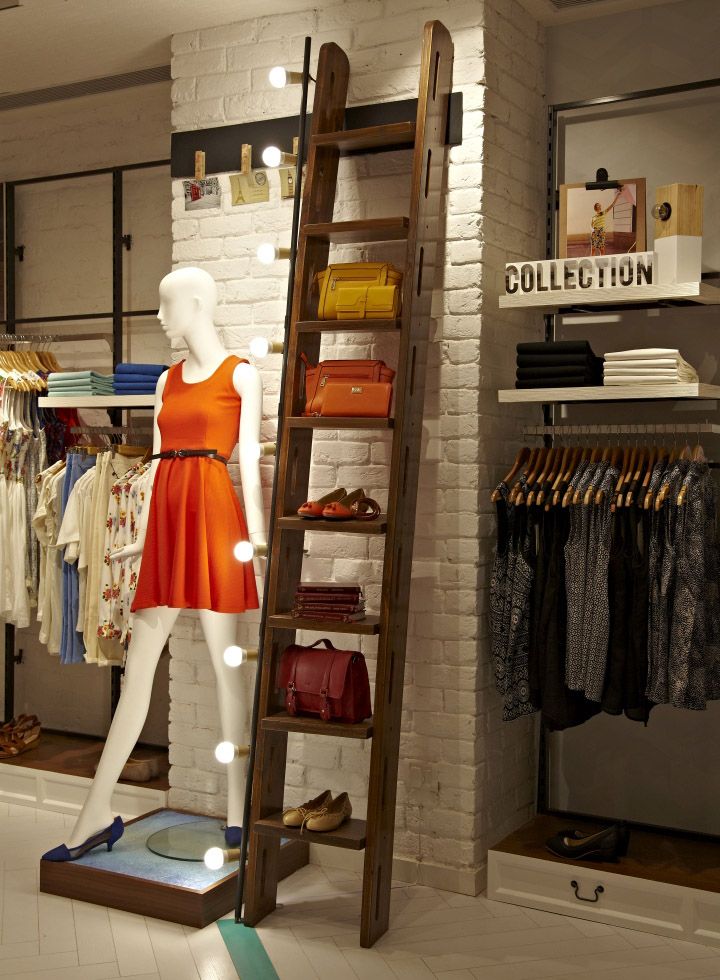Visual Merchandising - Beyond the Basics
Calvin Klein section in the creative retail store „Dover Street Market“ in New York. Every floor is another Visual Merchandising highlight. Photo credit © DSMNY
Everyone knows the power of three and that grouping by style is important, but visual merchandising is more than basic tricks of the trade.
Visual merchandising is a time-tested retail concept that focuses on enhancing the aesthetic appeal of a product or store to attract customers and increase sales. Meaning you simply can’t afford to settle with unappealing and ineffective in-store displays.
Here are tips from some of retail’s top talent on how you can maximise your merchandising to boost sales.
Every inch counts
Every inch of your store costs you money. However, there are many areas in your store that have the potential to make you money.
Additionally, there are ways to ensure you’re making the most money per square footage.
Understanding how much product comes along with its value, cost, and how it’s displayed is key in determining your merchandising margins.
As Merchandising Manager for NRML, Brenda Dwyer asks, “Are you displaying your prime goods in prime real estate? Are you devoting too much space to sale? Has your display sold through?” After all, a great display is worthless if you don’t have enough product on hand.
You should also consider product placement and the visual story of each display. Additionally, Kyle Clemens, Director of Visual Merchandising for surf shop South Moon Under, suggests to not make things overly complicated. After all, “specialty folds and hangs look great at first, but if it's not shoppable or maintainable, it won't sell.”
Consider oddities
Solly by Allen Solly store in Saket, New Delhi. Photo © Santosh
Ever wonder why the rule of three is so important? You’re more likely to capture a customer’s gaze with imbalance. But you’re not only stuck to three items; any odd number works.
Jessica Clarke, retail merchandiser and stylist, states, “While basic elements of colour, height, and shape are important to visual appeal, it’s the slightest oddities that catch the eye.”
But be aware of just how odd you make your display.
Clarke continues, “Things that are easy to look at will be passed over, and things that are too outlandish will be offensive to the eye.”
Retail business developer Christopher Ortiz dives further, “Our subconscious mind drives most of what we do. If the merchandise is thoughtful, the mind is pleased. Too much confuses us and loses our interest."
The art of style
What was once an elitist delight, today art is open to the general population. As such, brands and department stores have embraced art, using it to elevate the customer experience in both window installations and throughout the store.
This is why it’s imperative that merchandisers not only stay up-to-date on the latest fashion trends, but they must also understand the value and history of the brand as a form of art.
Creative window display for Trussardi SS2018 by the Visual Merchandising team under Maurizio Vasile
Having worked for brands including Zara and Hermes, Juan Carlos Barrón understands the importance of branding with art. He explains, “As consumers increasingly demand more personalised products and experiences, it’s up to the VM team to create a sense of loyalty with a brand. They do this through taking a trend and making it their own – crafting a style – and embodying a specific personality.”
As a freelance design consultant, Denise Foley understands the importance of inspirations. “To stay relevant in the field it’s a necessity for Visual Merchandisers to continually enhance their creative skills and ways of seeing spaces. It's very important for anyone in the creative arts to be open to new experiences: this is how you allow yourself to become inspired.”
Emilio Capparella agrees. As a stylist and visual merchandising manager for Cotton On, he knows that “when you have a better understanding of your product and trends, you’re able to be more creative and confident in your execution. You can also use this information to work with your buyers.”
A great team is key
With long nights and early mornings, visual merchandising isn’t as glamorous as as it sounds. VM and Retail Marketing Specialist at The Good Guys, Michelle Terry, reminds us that “it often requires the ability to build on the spot, hang precariously off ladders and fit within small cavities to install displays.”
Tara Carter, Senior Team Lead at Target, adds that “a quiet workplace where I can stay focused simply doesn’t exist. With every interruption, it creates challenges to complete the task at hand.”
Tessa Robertson, VM Team Lead at House of Fraser, knows that merchandising requires multiple qualities including “good people skills, creativity, and the ability to take constructive criticism.” It is also important that merchandisers have great analytical and planning skills, as well as the ability to work in a fast-paced environment.
Merchandisers need to stay creative in a commercial environment in order to entice your audience to spend time – and money – in your store.
The next level
Most retailers know there is more to selling than meets the eye. As such, great visual merchandising is critical to the success of a store.
Window for Lord & Taylor 5th Avenue by Denise Foley

 Français
Français



